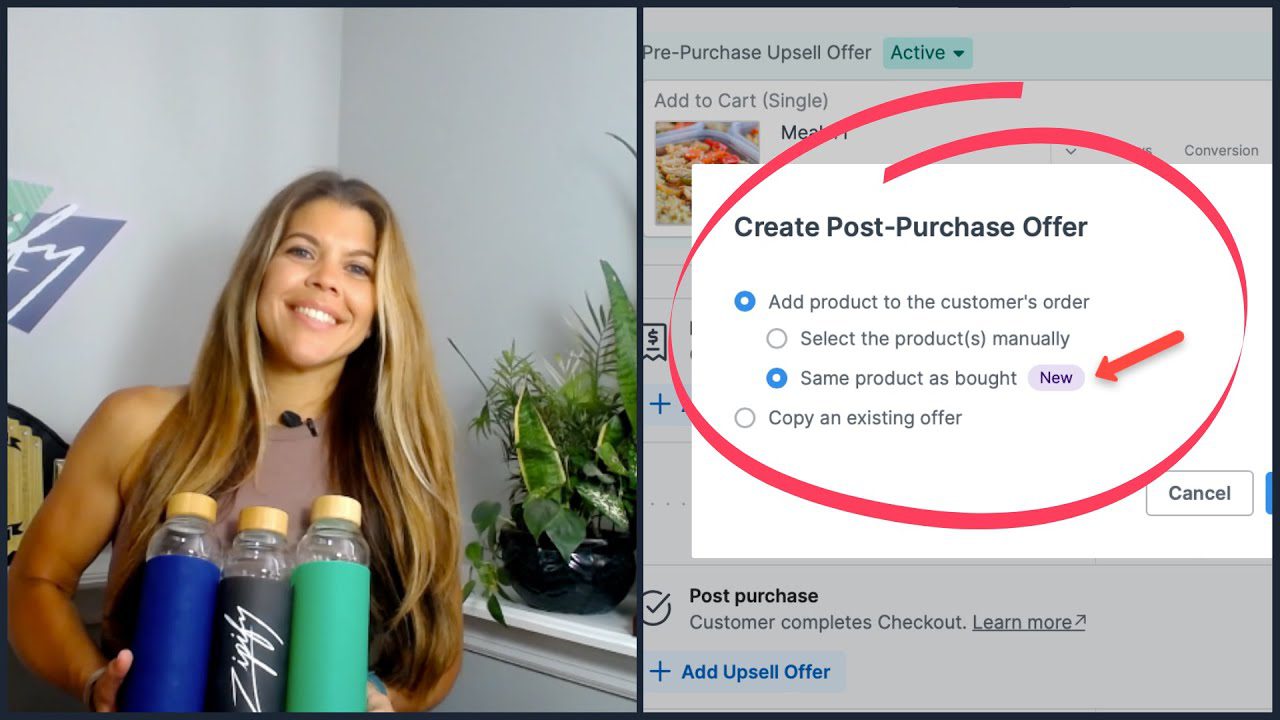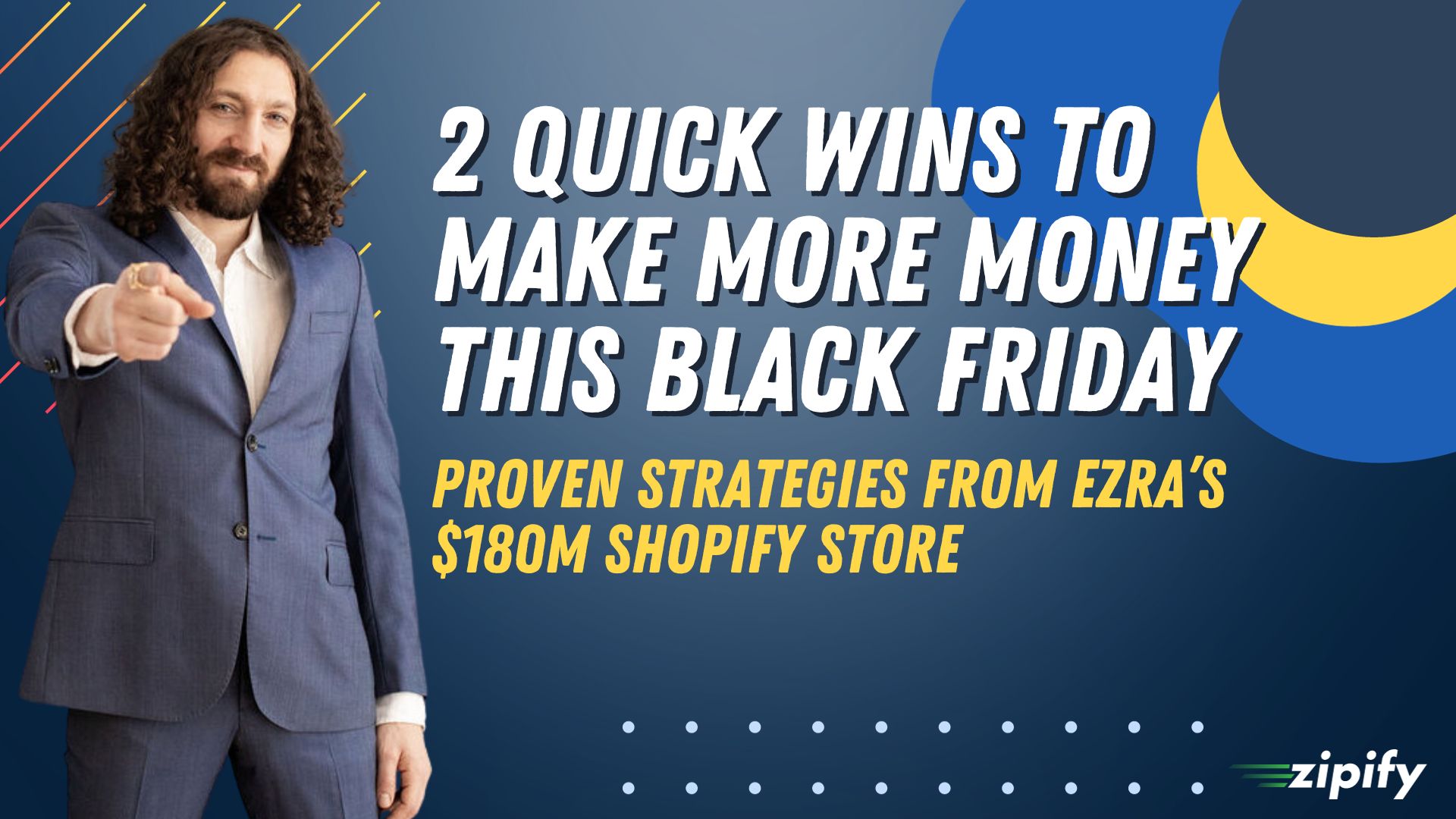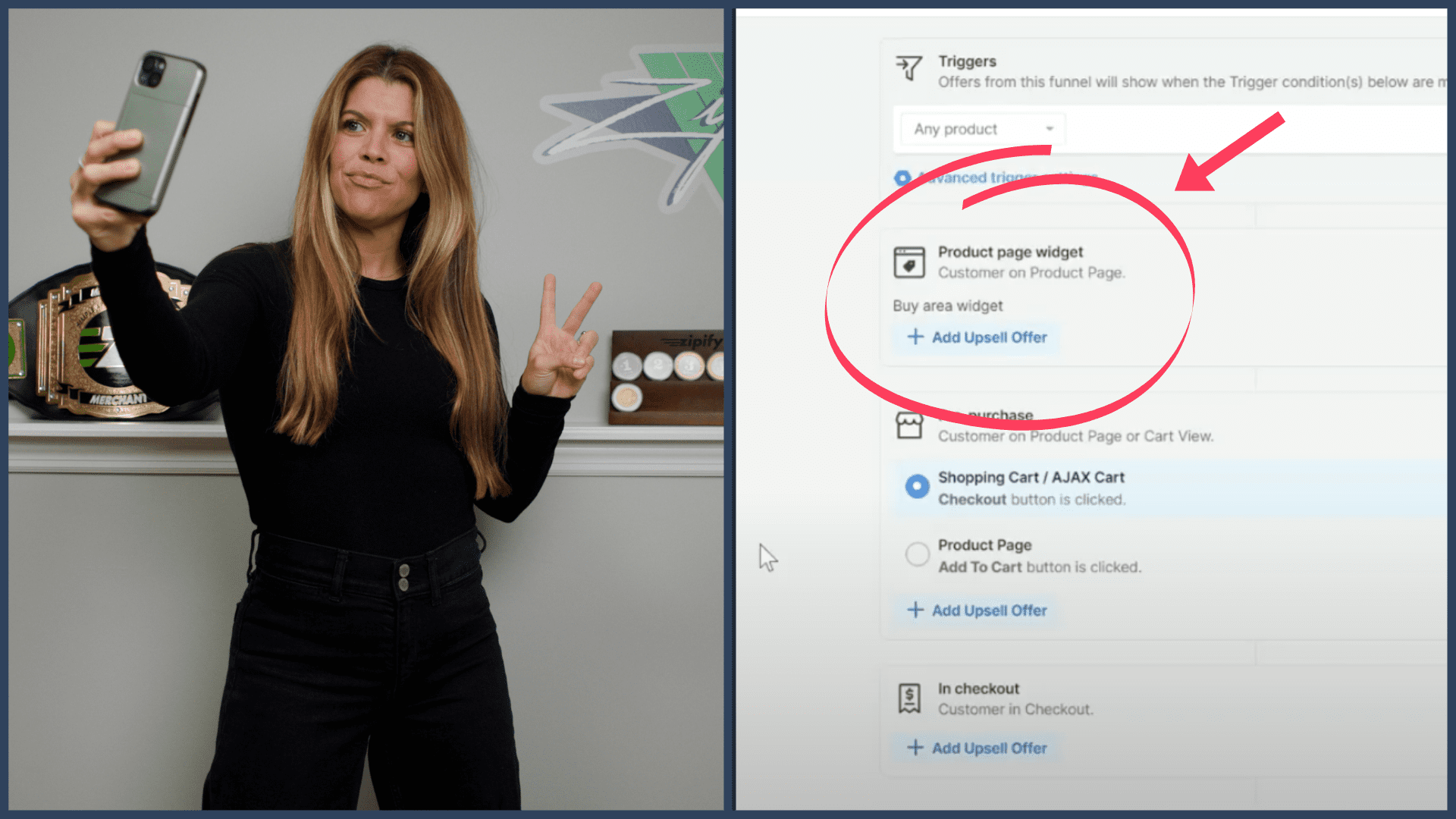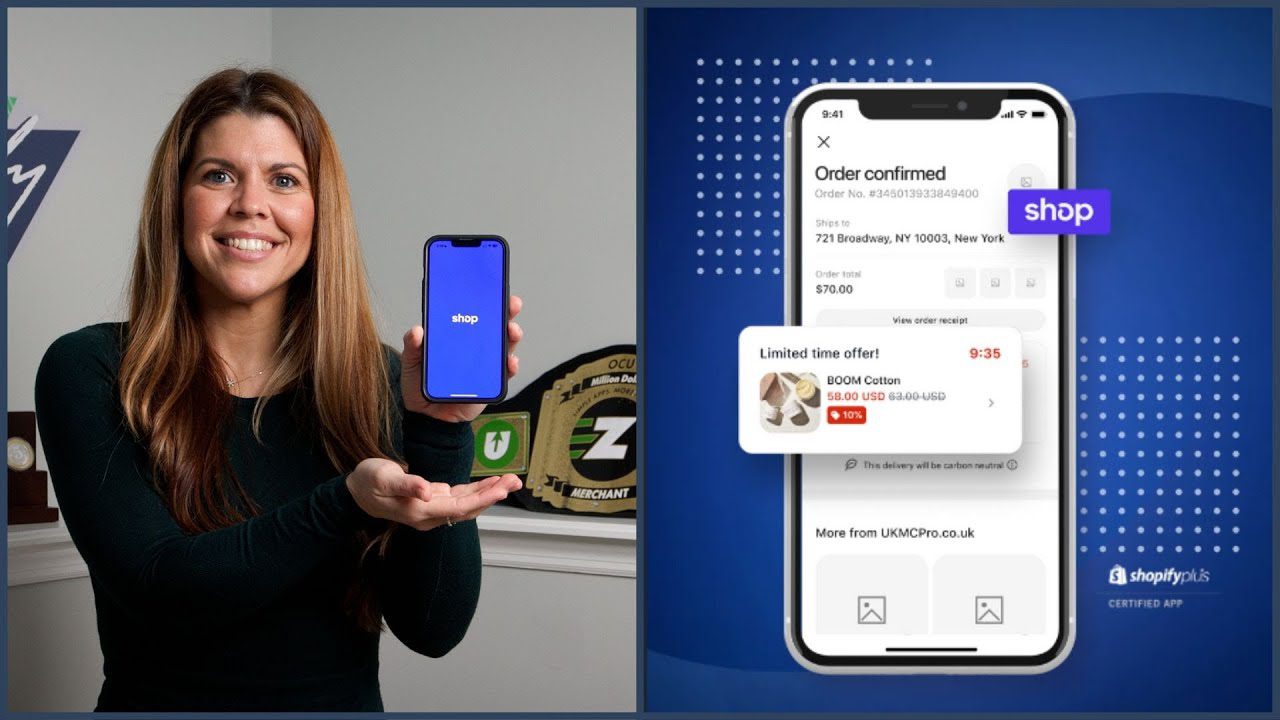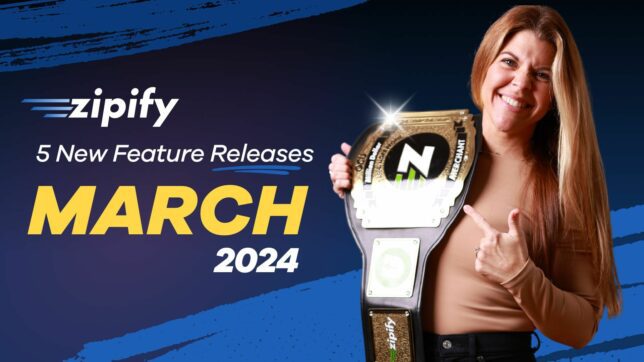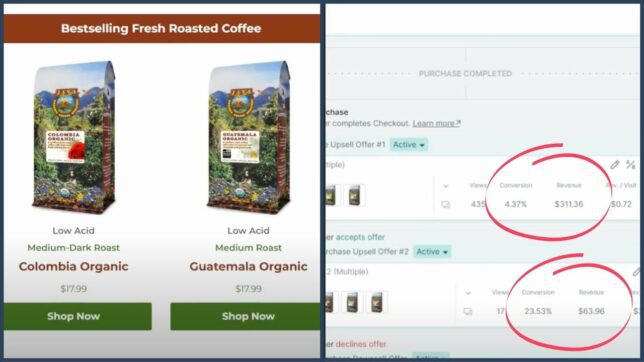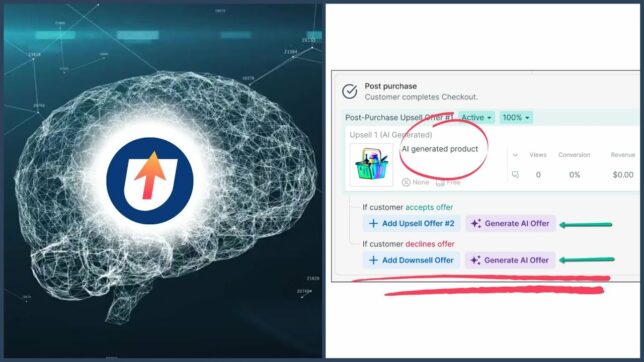-
NOTE: I wrote this article to help people expand their businesses from Amazon onto Shopify, but these strategies apply to anyone who wants to start a Shopify store or make the store they have more profitable.

Hey, I’m Ezra Firestone!
I’m the founder of BOOM! By Cindy Joseph, an 8-figure ecommerce business that generated $25 million in revenue in 2019 (and we’re still growing!), and I lead 96 employees across 3 brands.
But more than anything, I’m just a guy who loves ecommerce. That’s why I put so much of my attention on this skillset over the last 15 years, taking the steps I could take every day in the direction of growing my businesses.
And here’s the thing: you can do this too! All you need is to take the right strategies (which I’m about to give you) and commit to implementing them.
If you’re an Amazon seller who wants to boost monthly revenue, diversify their income streams, increase the value of their brand, or all of the above — then this article is for you.
I’m going to tell you why you should expand off Amazon (including one big reason that most people have never considered) and how to succeed where so many people fail.
Let’s jump right in!
Why Should You Expand Off of Amazon?
If you’re reading this article, then you probably already have an Amazon listing that’s driving sales — so why bother focusing on a new sales channel?
There are two important reasons why you should consider launching a Shopify store.
1. Protecting Your Brand
Amazon can be a volatile platform, and changes to their Terms of Service or search algorithm can have a big impact on your brand. Occasionally, they even use purchase data to copy your product and compete with you in your own market!
And if Amazon is your only source of revenue, one of these changes can wipe out your business overnight. (I don’t mean to scare you, but I’m not exaggerating. I’ve seen it happen to many people.)
By launching your own ecommerce store you diversify your revenue stream which protects your brand. If something were to happen to your Amazon listing, you’d have an additional sales channel to fall back on.
2. Increase Your Brand’s Value
Okay, most people know that Amazon can be volatile, but not many people truly understand how much launching your own Shopify store can increase the value of your business.
It does this in two ways:
Short Term: By launching your own ecommerce store (and by following my advice in this article) you can expect to increase revenue 5–10% without doing much work at all. Just by ranking on Google and doing a little retargeting on Facebook, you’ll reach big new audiences.
Long Term: While more revenue is awesome, adding a Shopify store gives you more than extra cashflow. The biggest benefit is that it makes your business significantly more valuable when you sell it. If you’re not thinking that far ahead right now, that’s okay — but let me explain why you should be.
Resource Generation: Cashflow vs. Asset Liquidation
Amazon is a cashflow business, meaning while your listing puts money in your pocket every day it’s probably not very valuable as a sellable asset.
If you want to create as much wealth as you can with your business (as I assume you do), then know this: most wealthy entrepreneurs don’t generate their fortunes on the backend of cashflow businesses.
To generate true wealth, you need to focus on asset liquidation.
In America over the last 10 years, the type of business with the greatest ROI is private equity: you purchase businesses, grow them, then sell (or liquidate) them at a profit. You don’t operate the business — you leave the CEO in place to run it — you just give them strategic advice on how to grow.
Similarly, in ecommerce, 60–80% of all the money you will ever make from your business will be from when you sell it. That means you want to do everything you can to make your brand as valuable as possible before you liquidate.
Fortifying your brand on Amazon is a great step toward building a valuable, sellable asset, but if you could do one thing to increase how much it’s going to be worth when you sell, it would be to expand off Amazon.
Here’s why.
Asset Liquidation: Valuation Based on Multiples
A multiple is a figure used to calculate the value of your brand, usually along with your yearly profit. If you have an Amazon business that does $100,000 in yearly profit then it’s estimated that your business would be valued at a 4x multiple, making your business worth $400,000.
But if you have a Shopify store making the same amount of yearly profit, it’s estimated that you could sell for up to a 12x multiple — or $1,200,000. (My brand was just valued at 12x its yearly profit.)
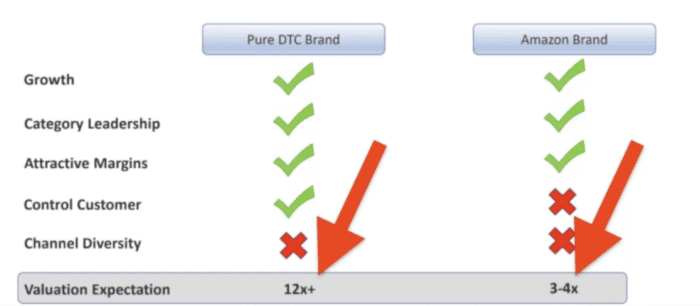
If you have both a Shopify store and an Amazon store, you’ll probably land somewhere in the middle.
And while a lot of things impact the multiple your business gets, there’s universal agreement that having a footprint off Amazon significantly increases the value of your brand.
Why are Shopify businesses worth so much more than Amazon businesses? Because they have brand assets.
Brand Assets: The Key to a High Multiple
Listen closely, because I want to burn this into your mind: your goal as a business owner should be to create brand assets. They’re the most valuable things your brand can have.
Brand assets are anything owned by your brand that adds to its value — from your logo, tagline, YouTube content and landing pages, all the way up to your most valuable brand assets: your customers.
The 3 most prominent brand assets that an ecommerce business has are:
- Pixeled Audiences: People who have seen your ads, been to your website, or interacted with any of your other tracking pixels.
- Email Leads: People who have opted into your email list.
- Customers: People who have purchased from you and given you their personal information.
And here’s the thing: not one of these three assets is available to Amazon businesses. When you make a sale or get a visitor to your listing, Amazon gets all the customer data.
But by launching your own Shopify store, not only can you get the extra 5–10% in revenue for doing very little work (and eventually you can get a lot more), you also get something far more valuable: a higher multiple for your brand.
When we get to my 5 steps for expanding off Amazon, I’ll explain how to build brand assets for your Shopify store and I’ll give you strategies for maximizing the value of those assets. But first…
Why Do Most Brands Fail When They Move Off Of Amazon?
That was a big-picture look at why expanding off Amazon is so important.
As I’ve said, not a lot of brands understand this. And of the brands that do understand it, very few actually succeed at it.
So, why do so many brands fail at scaling off Amazon, and how can you avoid the same fate?
Selling on Amazon vs. Selling on Shopify
These are two very different ways of selling online, and it’s really important that you understand the differences.
Amazon
Amazon is a search-based (or query-based) platform. You search, you find, you buy.
It reminds me of when I first got into the game. In 2005, the only way to create visibility for my brand was with Google Adwords and SEO. Someone would type in “mullet wig” (at one time I was the #1 seller of mullet wigs in America!), and I’d rank for that query and sell my product.
This was great for people who could rank high on Google, but it was difficult to scale. There was no way to sell to people who weren’t already looking for your product (sound familiar?), and because rankings were controlled by an algorithm, an update could cause your business to go belly up overnight (again, sound familiar?).
Anyway, while a lot goes into being successful on Amazon — like optimizing a listing, getting reviews, and buying traffic through sponsored search — it’s still the simplest form of ecommerce: the platform is both your visibility source and your shopping cart, it’s doing all the communication with the buyers, and it has all the brand recognition.
But this simplicity has a downside: when you make a sale Amazon keeps the customer data, like email addresses and mailing addresses. (Remember, these brand assets are the reason Amazon brands are less valuable than Shopify brands).
Shopify
Most Shopify stores, on the other hand, don’t get a lot of people searching for their products. It’s their job to put their product in front of people — the right people.
To do that, most rely on contextual advertising: targeting customers based on what they know about them (their age, gender, interests, etc.).
And because we’re showing our products to people who haven’t told us they’re interested in buying, the ability to get and hold people’s attention becomes very, very important.
And to do this effectively for an ecommerce store, you have to leverage more assets across more platforms than you do on Amazon — and this is where most people fail.
The most common sales funnel (and my favorite) is this: a Facebook video ad, to an ecommerce product offer page, to a shopping cart, to an upsell offer page:
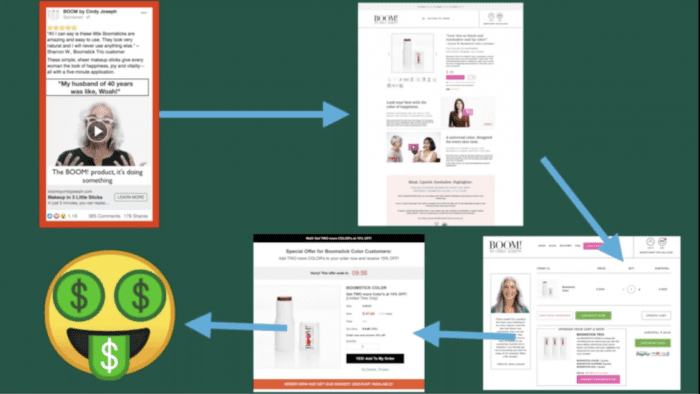
Unfortunately, Amazon brands are used to only worrying about optimizing a product listing and buying search traffic, so they get these assets wrong and usually fail at expansion.
But I’m going to show you how to get these assets right.
My 5 Steps for Succeeding Off of Amazon
Now that you understand why you want to expand off of Amazon and why so many people fail at it, let’s talk about what you should do to succeed.
Step 1: Calculate Your Profit Margin
Boy, do Amazon sellers get this wrong.
Most Amazon sellers think that their profit margin on Amazon can be the same as their profit margin on Shopify, and that simply isn’t the case.
Your profit margin is the difference between how much you buy your product for and how much you sell it for. If you buy for $5 and sell for $8, you have a profit margin of $3. (This is technically your gross profit margin which doesn’t account for your other expenses.)
On Amazon, profit is typically very low because Amazon is inherently competitive. With over 2.5 million active sellers — and price and reviews being the two main factors influencing purchase decisions — everyone drops their prices as low as possible.
Fortunately, Amazon sellers can afford to have a low profit margin. This is for two reasons:
1. Your Conversion Rate is Higher on Amazon
An Amazon product listing page converts between 10–25% while an ecommerce product page converts between 1–4%. Amazon is sending you prefiltered buyer traffic (people who have come to the platform with the intent to buy and who have their credit card details on file), and since you’re converting more buyers you can afford to profit less on each sale.
2. Your Marketing Costs Are Lower
Because Amazon is an all-in-one platform, sellers don’t have many expenses other than the cost of sourcing the product and the fees collected by Amazon. What people fail to realize is that, when they transition to Shopify, their marketing costs increase because they have to do more to acquire a customer. (This lowers their net profit margin, or how much they profit after subtracting all their expenses.)
The Buy-for/Sell-for Ratio
So what should your profit margin be? Here’s a simple formula for calculating the right gross profit margin to sustain your Shopify store.
Just use the Buy-for/Sell-for Ratio: on Shopify, you should to at least buy for 1 and sell for 3. That’s a Buy-for/Sell-for Ratio of 3.
Example: Boomsilk
Boomsilk is one of my most popular products. This moisturizer costs me $9 to make and sells for $29 retail, leaving me with a Buy-for/Sell-for Ratio of 3.2:
If, on the other hand, I were to buy for $9 and sell for $18 (a BF/SF of 2), I’d only have $9 in profit. That wouldn’t be enough to run ads, provide customer support, and cover the other expenses associated with running an ecommerce store.
A BF/SF of 3 is a safe bet, but your profit margin should depend on the price of your product. The cheaper the product, the greater the ratio you need. However, if you have a product that you buy for $15 and sell for $37.50, then a 2.5x ratio is probably okay because you’re still getting $22.50 on the product, which is plenty of profit to work with.
The thing to remember is that the better the profit margin, the better the offer works because you can afford to market and support the product. This is something that Amazon brands consistently fail at.
Don’t Be Afraid to Raise Your Prices
So, what should you do if the profit margin on your Amazon product is too low to transition it to a Shopify store?
Raise your prices!
That’s what I did when I moved one of my skincare brands off Amazon. And it worked because by the time someone got to my website I’d already used a Facebook video ad to get them invested in my brand.
Plus, there was less competition: customers weren’t looking at 7 different products at the same time, so it was okay to be more expensive.
Sellers coming from Amazon are so afraid to raise their prices. They think if they charge more on their website, then people will go find it for cheaper on Amazon. But as it turns out that’s usually not what happens. The people who shop on Amazon and the people who shop on independent websites are often not the same people.
Step 2: Maximize Average Order Value
Regardless of what ecommerce platform you sell on — Amazon, Shopify, Alibaba, Facebook, etc. — and regardless of your market, 75% of people who buy from you will never buy again. Which is why you want to maximize the revenue you get from every sale.
Average order value (AOV) is the average amount of revenue you make per order. If you make 2 sales, one for $50 and one for $30, then your AOV for those sales is $40.
This is an incredibly important number to pay attention to. If you raise your AOV from $40 to $60, you increase your revenue by 50% without buying any more traffic!
So, how do you increase your AOV?
By offering your customers more products and more expensive products via cross-sells and upsells.
People transitioning from Amazon usually don’t do this very well because on Amazon it’s not really possible. But I’ve built my entire career studying the principle of AOV, and my ability to maximize this metric is one of the reasons why I’m as successful as I am.
The secret is to make your customers offers to upgrade their order at every stage of the sales process, starting with your product page.
1. Product Page Order Bump
A product page order bump is an upsell or cross-sell that you make on your product page. Here are some of the most effective ways of doing this:
Bundles
A bundle is a collection of products, either multiple of a single item (like 3 tubs of moisturizer — this is a great option for sellers who only have 1 product) or several complementary items.
One of the most common examples of this is Amazon’s “Frequently Bought Together” product page order bump:
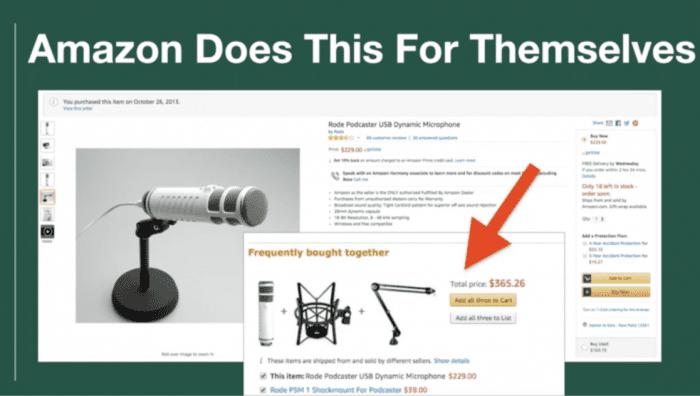
On every product listing, Amazon tries to increase their AOV by encouraging the customer to upgrade to a bundle. This is one of the most effective strategies for AOV optimization.
Add-ons
Add-ons are small additions that will add value to your customer’s purchase. Here’s an example from My Costume Wigs, the first ecommerce store I sold:
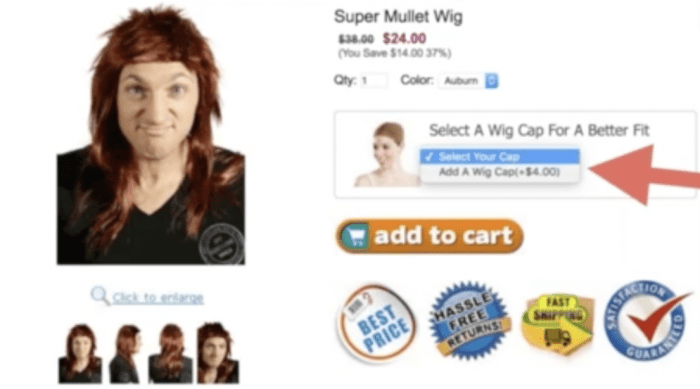
With our wigs, we would offer a wig cap for $4 (I think it cost me 25¢), and 60% of buyers took this order bump. Think of what that did for my AOV!
Pricing Tiers
In this case you’re not offering an additional product but a more expensive product, usually using product variants. You can offer larger product sizes or versions of the product with additional features.
I offer Boomsilk in 2oz., 4oz. and 8oz. jars. 40% of buyers choose the 8oz. option which costs $35 more than the 2oz. That has a huge impact on my AOV!
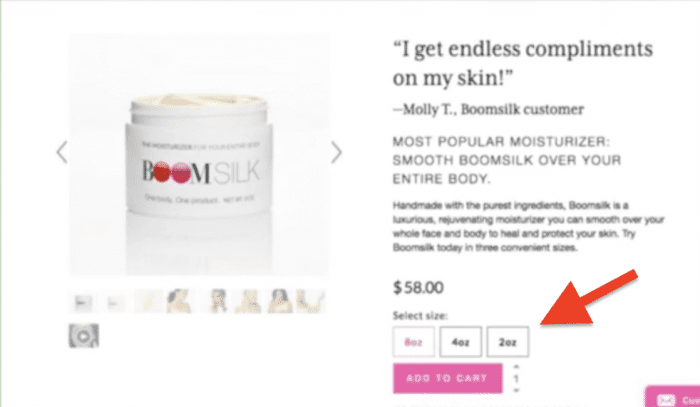
Recurring Billing
This is an easy product page upsell if you sell a consumable. Your customers get added convenience and you get predictable revenue:
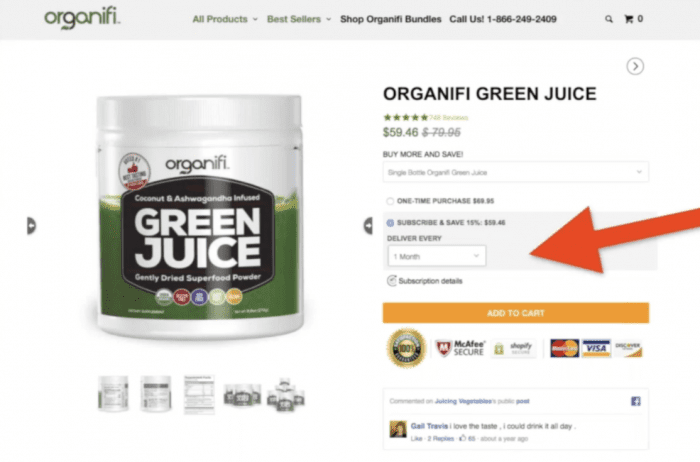
2-step Upsell
This isn’t a specific upsell, more of an upsell strategy (and a fancy one at that).
Instead of making additional offers on the product page, you can do it on a page in between the product page and the shopping cart.
Here’s an example from my Valentine’s Day Sale:
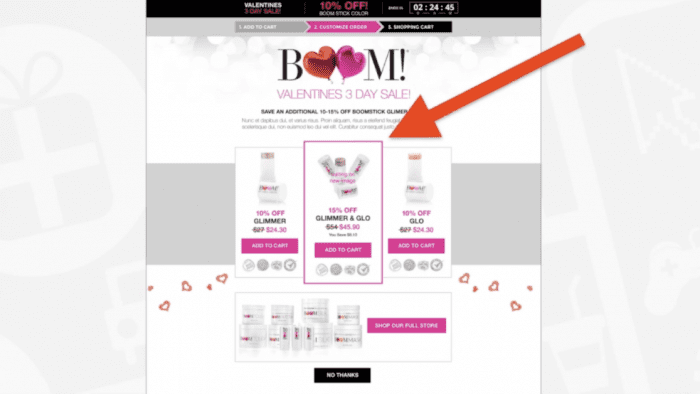
Some of this might sound complex, but it’s all super easy to do with OneClickUpsell, my Shopify upsell tool. I’ll tell you more about it in a minute.
2. Shopping Cart Order Bumps
Because we want to be offering upsells and cross-sells throughout the sales process, in addition to product page order bumps we also offer shopping cart order bumps.
We do this in 2 different ways:
- Upgrade Product
This lets you offer your customer an upgraded product — either a bundle or a more expensive version of what they already have — that will replace the product they have in their cart.
In this example from BOOM!, at checkout we pop up a lightbox offering 2 additional products at a $5 discount (and a lot of people take it!):
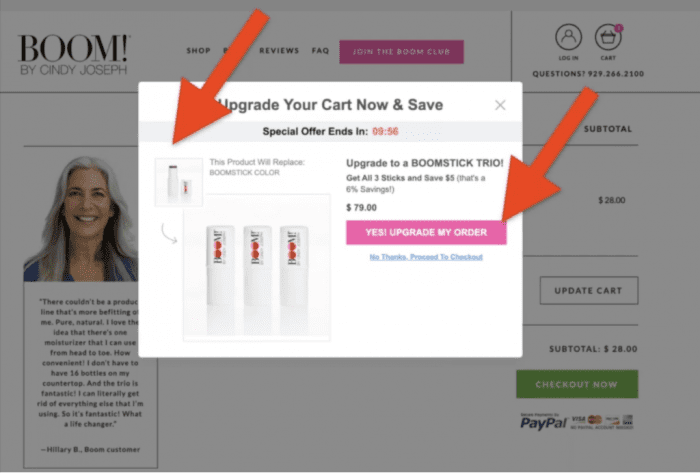
- Add Another Product
This offers the customer another product in addition to the product they already have in their cart:
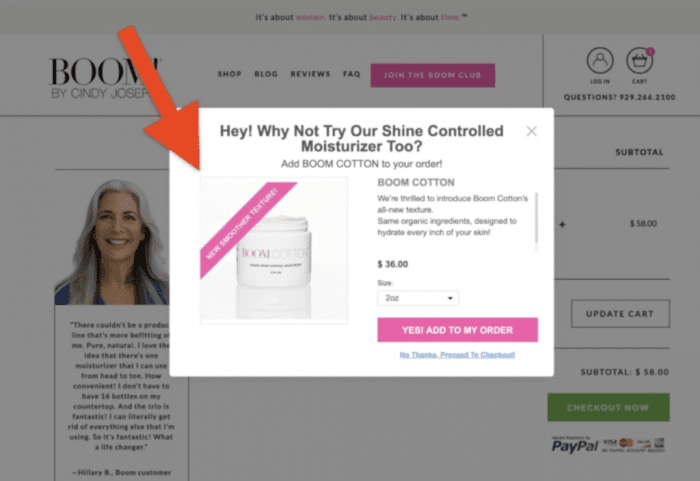
And if you use my upsell tool, you can split test these two shopping cart order bumps to see which one performs better for you.
3. Post-purchase Order Bumps
This strategy is especially fun, because it isn’t possible on Amazon at all.
After someone buys from our store, instead of sending them to a Thank You Page we send them to a Post-purchase Upsell Page. Here, with one click they can add more products to their order, usually with the incentive of a small discount:
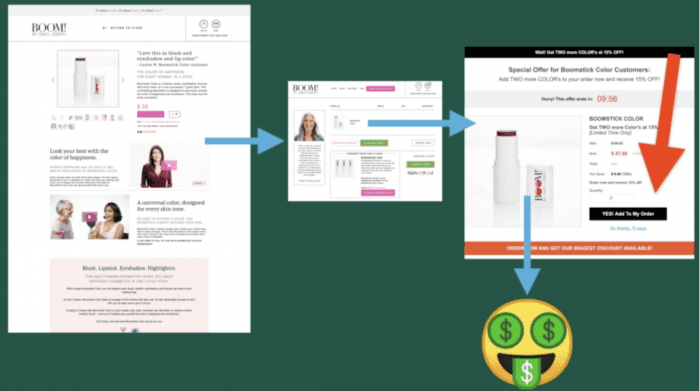
These offers are especially effective because they’re:
- Highly Targeted: Someone just purchased from you, so you know which other products they’re likely to buy.
- Well-timed: After someone makes a purchase they experience “buyer’s euphoria” which makes them more likely to buy again, so this is the perfect time to make them another offer.
Again, the secret to maximizing your AOV is to make additional offers at every stage of the sales process — with product page order bumps, shopping cart order bumps, and post-purchase upsells.
You only have to implement one of these to start seeing significant results and get ahead of other people scaling off Amazon. Ideally, you’ll implement all three.
How to Maximize Your Average Order Value
Some of these order bumps can be implemented using your Shopify theme, but if you want to use the more advanced strategies — like shopping cart upsells and post-purchase upsells — then check out my upsell and cross-sell tool, OneClickUpsell.
I took everything I learned over the last 10 years about how to maximize average order value and put it into this simple and effective Shopify app.
Step 3: Optimize for Conversions
When you move off Amazon, I can’t stress how important it is that you optimize your pages for conversion.
Conversion Optimization is the process of improving your pages so that more people say yes to your offers.
Think about it like this: if 100 people come to your website and you make 1 sale, that’s a 1% conversion rate. But if you can increase that to 2 sales for every 100 people you now have a 2% conversion rate, and without getting more traffic you literally just doubled your business.
This is another principle that I have spent a lot of time mastering, and my expertise in conversion rate optimization has helped me build my reputation as one of the top marketing educators in the industry.
Eventually, you want to optimize every page on your site, but the most important one is your product offer page.
Where to Start: Your Product Offer Page
I like to think of product offer pages in 4 sections: Header, Image/Video Carousel, Buy Box & Stacked Conversion Support Content.
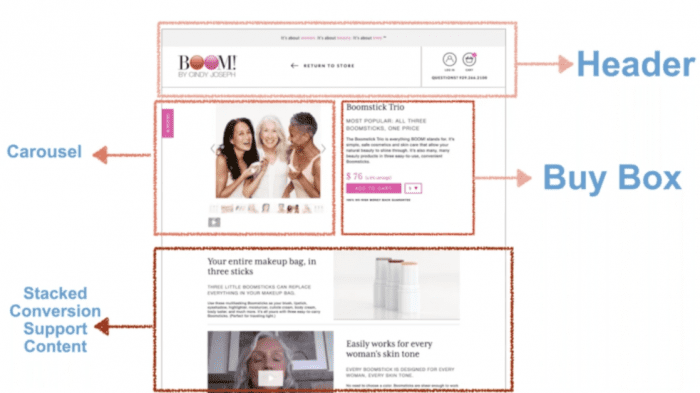
While most Amazon sellers know how to optimize their listing, not many understand how to use these sections to make an ecommerce product page convert.
I have something I call the Conversion Asset Theory that can give you a new way to look at page optimization.
This theory says that your product page is simply a collection of conversion assets working in concert with one another to support you in your goal (a conversion) and the prospect in their goal (a solution to their problem).
These conversion assets can be videos, testimonial, image, copy blocks, etc., and all of these are stacked together in a particular way to achieve the conversion.
What’s the Best Type of Offer Page?
Most new brands coming from Amazon just do traditional product pages consisting of a buy box and some tabbed product details, but I’m going to show you how to build pages that are much more effective.
For every product that I sell, I either use a long-form product page or a new type of sales page called a product mini-site. This is 2 or more pages connected by a navigation bar — essentially an entire website for a single product:
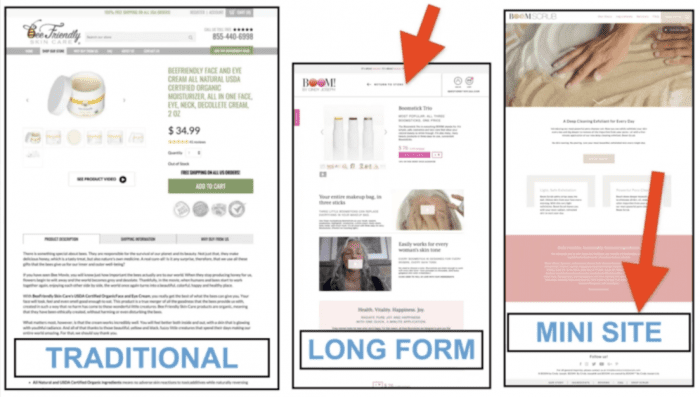
(If you want to copy all of my best product offer pages then check out Zipify Pages, my Shopify landing page builder. I’ll tell you more about it at the end of this section.)
It’s important to understand that — regardless of whether you use a long-form page or a mini-site — these pages leverage the same conversion assets.
Let’s look at what they are.
4 Things You Must Get Right About Conversion
Here are some of the most important things you should include on your Shopify product pages.
1. Call-to-action Above the Fold
On desktop and mobile, you want the CTA button visible above the fold so that as soon as someone lands on your page they have the ability to buy:
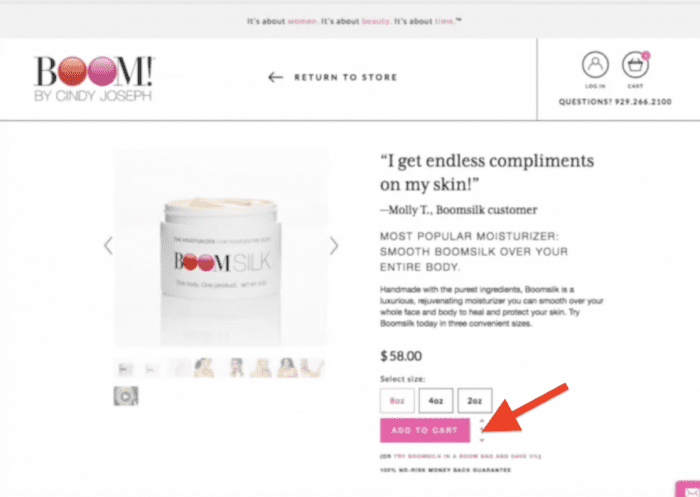
2. Sales Copy in the Buy Box
I’ve tested dozens of buy box copy formulas, and this is consistently my best one:
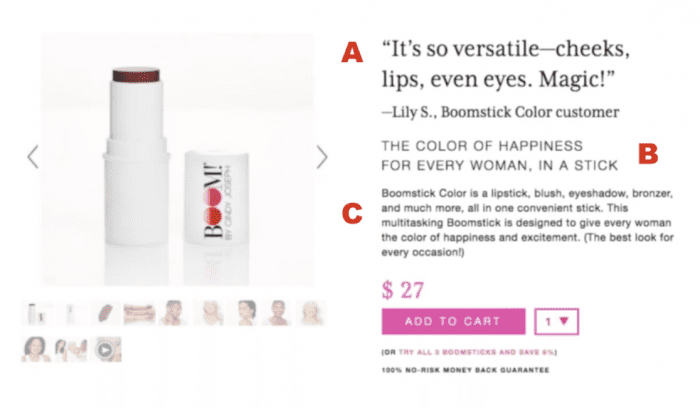
A. I open with a short customer testimonial. Most people put the product name at the top of the buy box, but people already know what the product is — you don’t need to tell them! You need to start selling right away.
B. Then I use an ownership benefit statement. This sums up how the product will improve your customer’s life.
C. Lastly, a one- or two-sentence product overview providing more details.
You might think these aren’t a big deal, and you’re right — they’re a huge deal! One of the main reasons why brands don’t convert off Amazon is because they don’t understand storytelling and brand building.
3. USPs in Image Format
Unique Seller Propositions (USPs) are things that your offer includes besides the product itself: this can be free shipping, a low price, made in the USA, etc. You want to call these out on your product page, and you want to do that in text and image format:
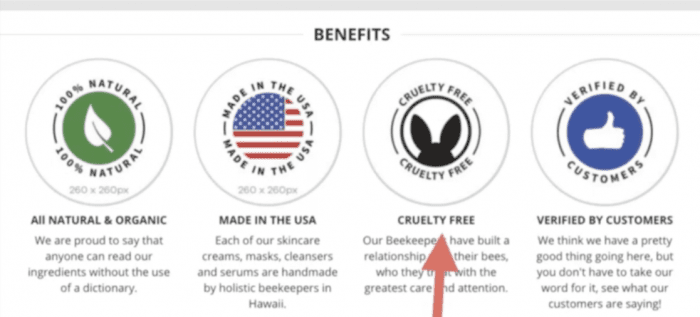
4. Isolation Effect
One of the most common things to split test on a product page is the color of your CTA buttons. In my experience, the color doesn’t really matter as long as it’s on-brand and it uses the Isolation Effect:
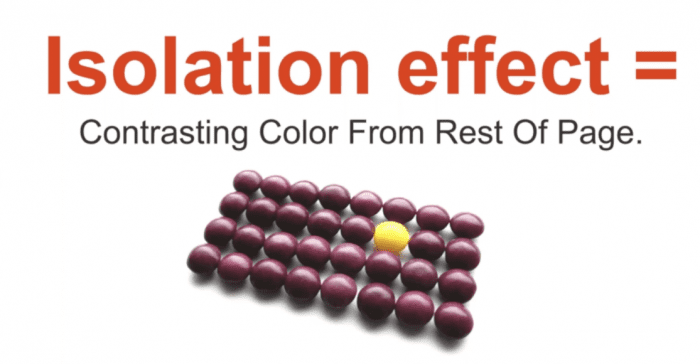
This means that your calls-to-action use a color that is not used anywhere else on your page, visually isolating it from the rest of the page so that it draws the customer’s attention and sells the click.
How to Optimize Your Pages for Conversion
All of the conversion strategies I just layed out in this section are easy to implement. Just use Zipify Pages, my landing page and sales funnels builder for Shopify.
This app lets you copy all of the landing pages from my best campaigns, or build your own using all the elements I just described.
Step 4: Lower Your Customer Acquisition Costs
The more customers you can acquire, the more brand assets you have, the more your brand will be worth when you sell.
Off Amazon, most of your website traffic will come from paid advertising on platforms like Facebook, and to consistently attract and convert customers at a profit, you need to create good ads.
The best ad formula we have right now for converting new customers is our Love-Demo-Love video ad template.
Our #1 Facebook Ad Campaign: Love-Demo-Love
This Facebook video ad template starts with a face-to-camera customer testimonial (love), then goes to a product demonstration (demo), then finishes with another testimonial (love). Simple as that.
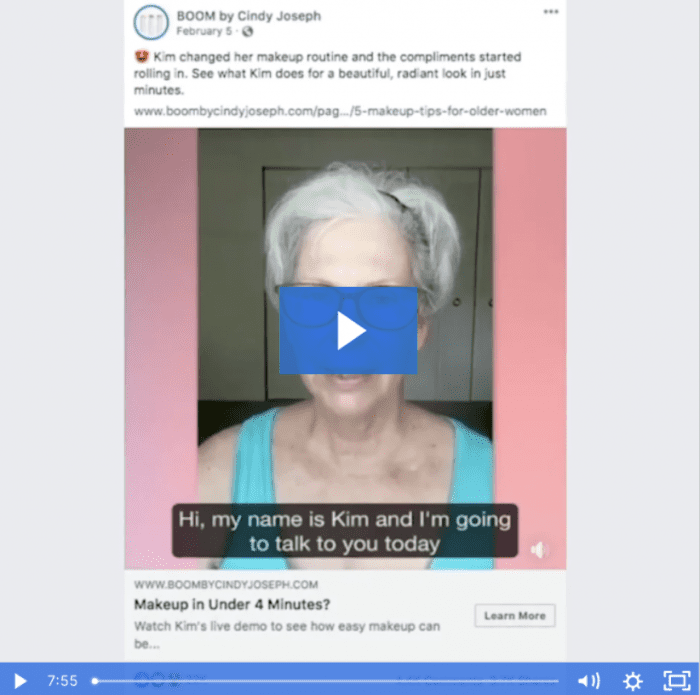
The content you use at the top of your funnel to attract new customers is super important, and this is one of the most effective ad formulas we’ve ever used.
Using this template, my brand generated $2.5 million from just $1.6 million in spend and acquired 36,000 new customers — pretty incredible!
Here are some tips for how to make the most out of your Love-Demo-Love video ads:
- Social Proof: We start our ad copy using more social proof from a customer testimonial.
- Additional Headline: We edit a headline into our video so people know what it’s about at a glance.
- Square Canvas: We use a square video so it takes up more space on mobile.
- Captions: We edit in our own captions so people with their sound off can still follow the video. (Facebook generates captions for you, but they’re usually full of errors).
- Ownership Benefit Copy & CTA: We like to remind people how this product will change their lives for the better, both in the copy above the video and in the ad CTA at the bottom.
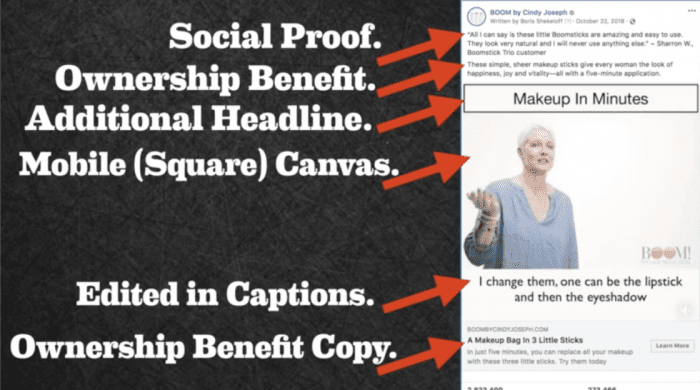
This might seem complex, but there are a ton of tools you can use to edit videos for these ads. All you need is the customer testimonial. If you don’t have any, start by giving your product to friends or family and get testimonials from them (but make sure they’re genuine!).
The beauty of Facebook ads is that one good one will take you very, very far. A single good ad can take you to a million dollars off Amazon.
More Advertising Tips
Top-line Spend Ratio: The amount you spend on customer acquisition ads should depend on your yearly revenue. If you make $100,000 a year you should spend $10,000–$30,000 on ads, depending on your ability to scale your campaigns. This is your Top-line Spend Ratio.
Be Consistent: One way new ecommerce stores mess up with ads is they’re constantly starting and pausing campaigns. Ads are like a diet: you can’t just do it for 3 days and then stop and expect to see results. You have to set a budget and spend it.
New to Facebook Ads? Try This…
If you’re new to Facebook ads or just feeling overwhelmed with how to get started…
I recommend you start with this new (and free) course I did for Shopify Academy called Facebook Ads for Beginners.
In this course, I show you more winning video ads strategy that I’m using in my 8-figure Shopify store to sell millions of dollars in physical products and grow a meaningful brand.
Step 5: Focus on Lifetime Customer Value
Remember the 75% of your customers that only buy from you once?
Well the other 25% are a very important segment of buyers called your repeat customers, and this section is all about how you can get them to buy again and again.
Lifetime customer value (LCV) is the average amount that a customer spends throughout their entire relationship with your brand. Just as you want to maximize the amount that customers spend on each order (AOV), you also want to maximize how much they spend with your brand overall.
Because Amazon business owners don’t have customer data, they’re not used to upselling and cross-selling after someone buys, but this is a strategy that you absolutely want to implement once you transition to your own website.
So, how do you maximize lifetime customer value? By reengaging past buyers and making them additional offers. Here are the best ways to do that.
Cross-sell Ads
The first thing you want to implement to increase LCV is simple cross-sell ads. Reach out to customers who have purchased from you and offer them additional products.
If they bought your #1 most popular product, try offering them your #2 most popular. Or try offering them a product that is complementary to what they already bought, like we talked about in Step 2.
These repeat buyer cross-sell offers are some of our profitable ad campaigns:
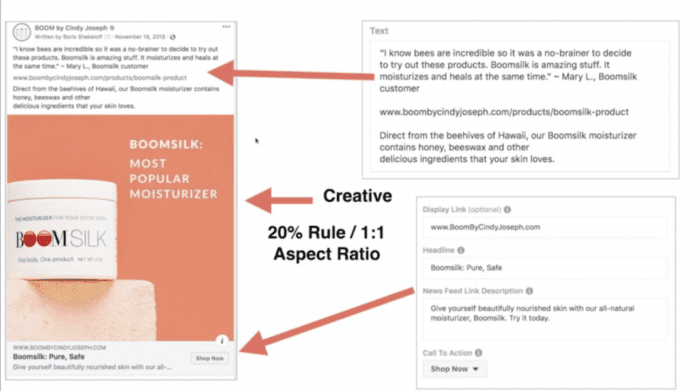
Special Promotions
No matter the size of your business, you should be running some kind of special promotion every 6–8 weeks. If you aren’t, you’re leaving money on the table. Even if you have a small list, you will generate extra revenue by running a sale.
And it doesn’t even have to be a major holiday. Any occasion can be a good excuse for a sale if it’s relevant to your audience.
For example, BOOM! believes in being eco-conscious and using ingredients and packaging that are sustainable and leave a small footprint. So when Earth Day came around we thought, “Hey, this is relevant to our audience. Let’s run a sale”:
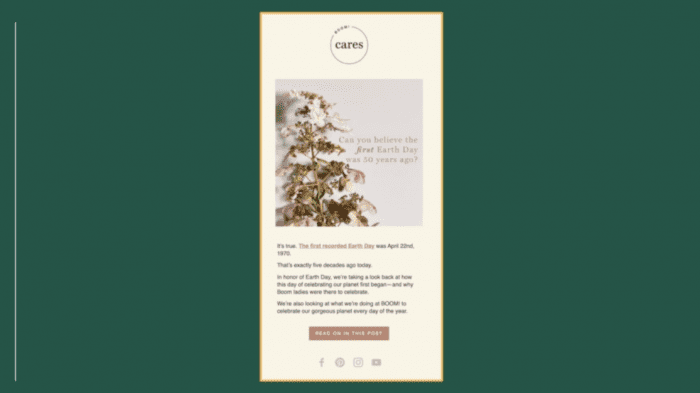
Launch New Products
One of the best ways to market to your past customers is by launching new products. The more products you offer, the more things people can buy who love your brand:
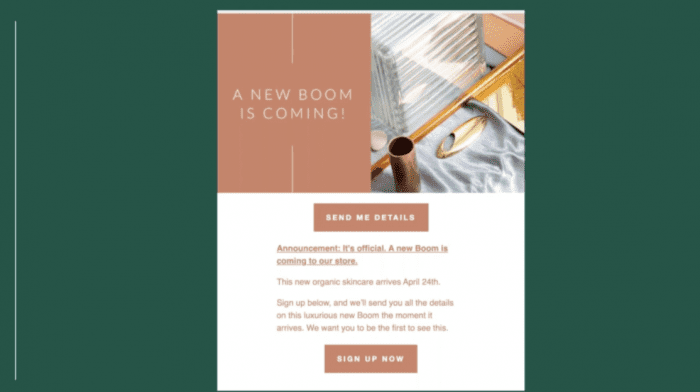
How to Increase Your Lifetime Customer Value
If you want an easy way to implement these strategies to reengage your customers and make them additional offers, use Zipify Pages, my landing page and sales funnel builder for Shopify.
It has templates taken directly from my best product launches, cross-sell campaigns, and holiday promotions for you to copy and paste.
Final Advice on Expanding Off Amazon
Those are the 5 steps you need to take to help you succeed when you expand off Amazon!
I really encourage to launch a Shopify store, because as I said it can earn you an extra 5–10% in revenue with very little work (eventually it can earn you much more) and it can make your brand much more valuable when you sell it.
Here’s my final advice: don’t try to reinvent the wheel. I’ve spent the last 10+ years figuring out what works best for ecommerce stores…
So if you do decide to implement the strategies in this article, I hope you’ll use the 2 Shopify apps that I mentioned: OneClickUpsell and Zipify Pages.
I built these tools from scratch so that I could leverage these tactics without a designer or a developer, and they’ve helped me grow my brands to over $100 million in revenue.
Thank you so much for reading — I hope it’s been helpful!
Zipify Pages
Landing Page & Sales Funnel Builder
This Shopify page builder comes loaded with all of my best templates, making it easy to copy the campaigns I mentioned in this article and optimize all of your pages for conversion.
TRY FREE FOR 14 DAYS | 100% MONEY-BACK GUARANTEE
OneClickUpsell
Upsell & Cross-sell Tool
Offer upsells and cross-sells at every stage of your customers’ shopping experience — including post-purchase upsells after they buy! (On average, users increase sales 10–15% immediately after using this app.)
TRY FREE FOR 30 DAYS | 100% MONEY-BACK GUARANTEE

